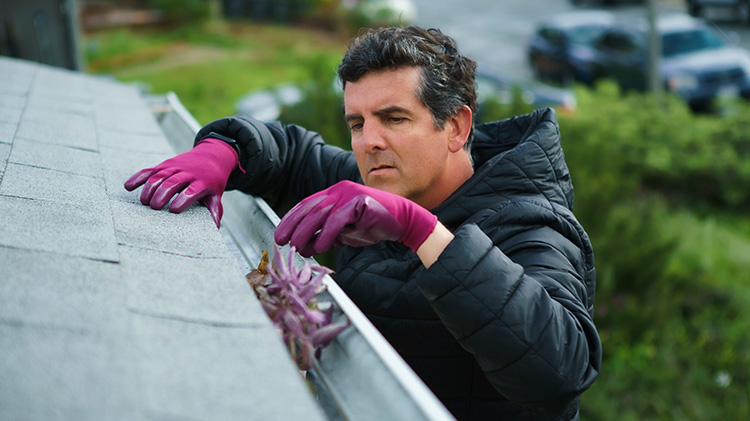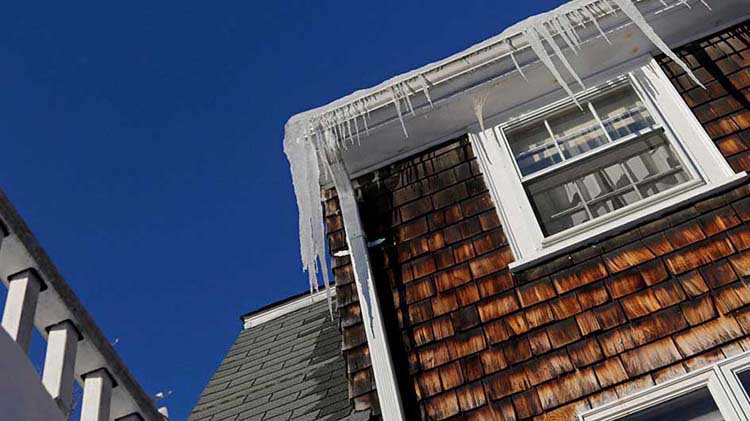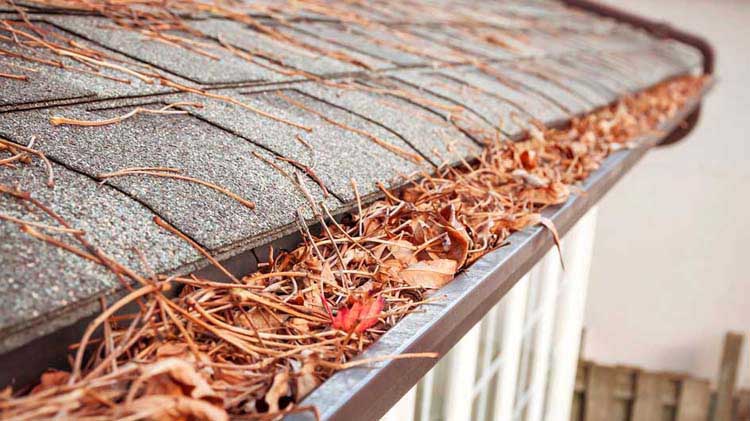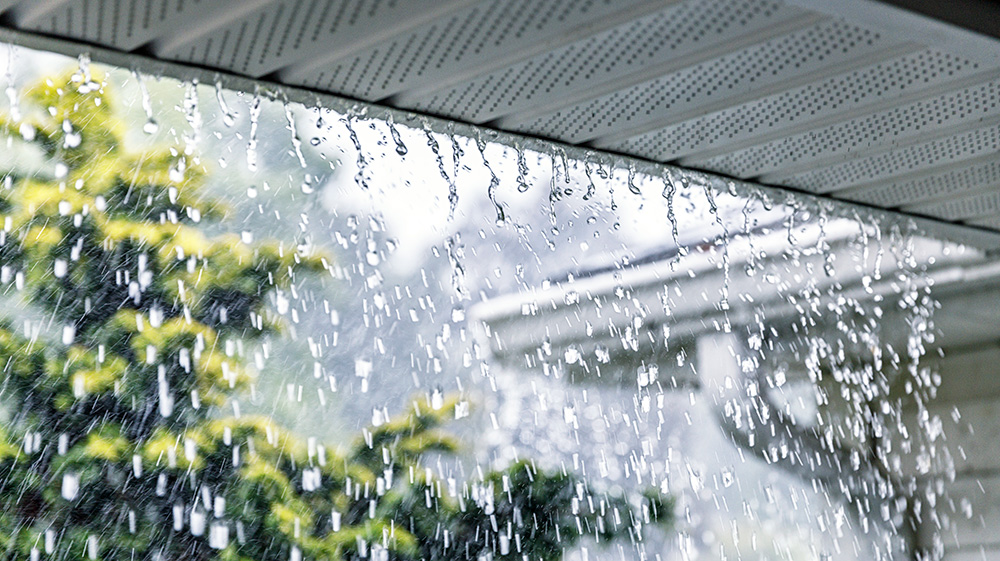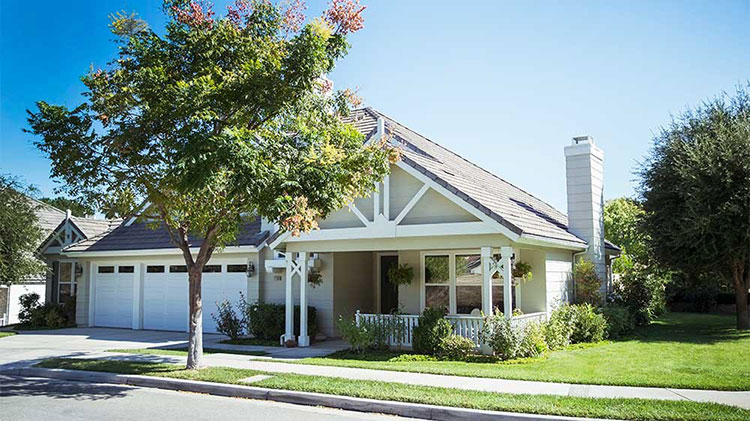Roof maintenance tips for your home
Learn how to recognize the first signs of a problem and take preventative steps to help make your roof stronger.
Your roof is put to the test daily. Sunlight can cause shingles to curl and crack, and even your attic plays a role in your shingles longevity. Rain and hail can also cause damage to shingles — and hurricane-force winds can tear them away and even blow off the underlying decking. Over time, even a small roof leak can lead to expensive repairs. Why not stop damage before it starts?
Roof maintenance checklist
- Wear protective gloves. Roof maintenance typically includes exposure to hazards such as extreme temperatures, sharp or rough surfaces and possible cleaning agents or chemicals.
- Clean your gutters and downspouts. Removing leaves, tree branches and any other debris can help prevent harmful moisture from being trapped which could lead to rot, mold growth and quicker decay of roofing materials.
- Remove debris from the roof’s surface. If you can safely access the surface of the roof (i.e. from an upstairs window), consider using a leaf blower or broom to help clear debris and reduce organic buildup. Otherwise, consider hiring a local roof cleaning service.
- Trim tree branches. Clear any branches or vines near your roof to help prevent debris buildup, moisture retention and possible rodent access to your roof or home.
- Invest in a quality ladder. If you’re going to be regularly conducting maintenance and examining your roof, it’s important to have a safe way of accessing your roof, attic and gutters. An extendable ladder can be helpful in accessing your roof more safely. Always conduct maintenance on dry days to more easily identify damage and help prevent slipping.
Roof damage — signs to look for
Consider inspecting your roof at least twice a year (fall and spring) to help monitor the condition of your roof and address any issues. There are signs to look for both inside and outside your home so taking the extra time to do a thorough check is important.
Outside your home
- Look for shingles that are missing, curling, cupping, broken or cracked. Check valleys for damaged or deteriorated materials.
- Look in gutters and downspouts for excessive granular loss. Manufacturers cover asphalt composition shingles with granules to help block ultraviolet rays from the sun, but natural aging will cause granules to erode and expose the asphalt over time. Granular loss begins during installation and occurs daily. This is an expected condition, but excessive loss may indicate a problem.
- Blisters, or small bubble-like raised areas on shingles, may appear when moisture trapped between the shingle layers is heated and rises to the surface. These blisters can break open, causing grit to fall away. Blisters are often a result of poor ventilation in the attic, causing heat to build up beneath the roof.
- The dark stains and streaks that sometimes develop on roofs (especially roofs with light-colored shingles) are caused by blue-green algae. This is more likely to happen in hot, humid areas. Algae can damage shingles over time and should be removed by a professional roof cleaner.
- Flashing around plumbing vents and chimneys should not be rusty, cracked or loose. These should be repaired to help prevent leaks.
- Keep the roof, valleys, gutters and downspouts free from leaves, twigs and other litter to allow for proper drainage.
- Water should not be pooling on low-pitched roofs. This may be an indication of inadequate drainage.
Inside your home
- Check the attic for leaks which often leave dark stains on rafters and the underside of decking. Most common areas are around the chimney, vents, skylights and valleys. Check for mold on the underside of roof decking. This usually happens when ventilation is poor, and moist air builds up in the attic.
- See if decking is sagging between the rafters. Sagging decking materials or broken rafters may have been badly damaged by consistent, long-term leaking.
- Check that soffit and ridge vents, gable vents and any roof vents aren't blocked by insulation or storage items. Proper ventilation can help prevent structural damage caused by moisture, increase roofing material life, reduce energy consumption and enhance the comfort level of the rooms below the attic.
- The requirements for proper attic ventilation may vary greatly, depending on the part of the United States in which a home or building is located, as well as the structure's conditions, such as exposure to the sun, shade and humidity.
- Verify that your attic floor is covered with a gap-free layer of insulation to help prevent heated or air-conditioned air from escaping your home.
When it's time to replace your roof
Your shingles may have a warranty of 15, 30 or even 50 years, but they may not last as long depending on the pitch of your roof, quality of the installation, quality of the attic ventilation and weather conditions in your area. If you have damaged roof shingles or your roof is showing signs of wear, ask a roofing professional to inspect it for you and determine whether it needs to be replaced. If your roof has been damage by hail or wind, consider contacting your insurance company. The following are some things to think about before having a new roof installed:
Re-covering an old roof
- If heavy snow, hail or strong winds are common in your area, building codes may not allow covering an old roof with new shingles. In other areas, building codes may only allow one roof re-cover.
- When a re-covered roof wears out, both layers of shingles need to be removed, and new underlayment and shingles installed.
Roof material options
There are many material options available for replacing your roof such as asphalt, slate, metal, synthetic, wood, clay, and concrete. Each material comes with pros and cons which may include anything from color selection, durability, cost and upkeep. Speaking with a reputable contractor to evaluate your options may help you decide what material is best for you.
Help keep roof repair costs under control
Just by keeping an eye out for problems, you could help save your home from damage and potentially spare yourself costly repairs. It can be helpful to continue building your emergency fund for any unexpected home costs, including roof repair.
Now that you’ve learned some roof maintenance tips, consider starting a conversation today with a State Farm agent if you have any questions about your homeowners insurance needs or to learn more home maintenance tips.
The information in this article was obtained from various sources not associated with State Farm® (including State Farm Mutual Automobile Insurance Company and its subsidiaries and affiliates). While we believe it to be reliable and accurate, we do not warrant the accuracy or reliability of the information. State Farm is not responsible for, and does not endorse or approve, either implicitly or explicitly, the content of any third-party sites that might be hyperlinked from this page. The information is not intended to replace manuals, instructions or information provided by a manufacturer or the advice of a qualified professional, or to affect coverage under any applicable insurance policy. These suggestions are not a complete list of every loss control measure. State Farm makes no guarantees of results from use of this information.
State Farm Fire and Casualty Company
State Farm General Insurance Company
Bloomington, IL
State Farm Florida Insurance Company
Tallahassee, FL
State Farm Lloyds
Richardson, TX
